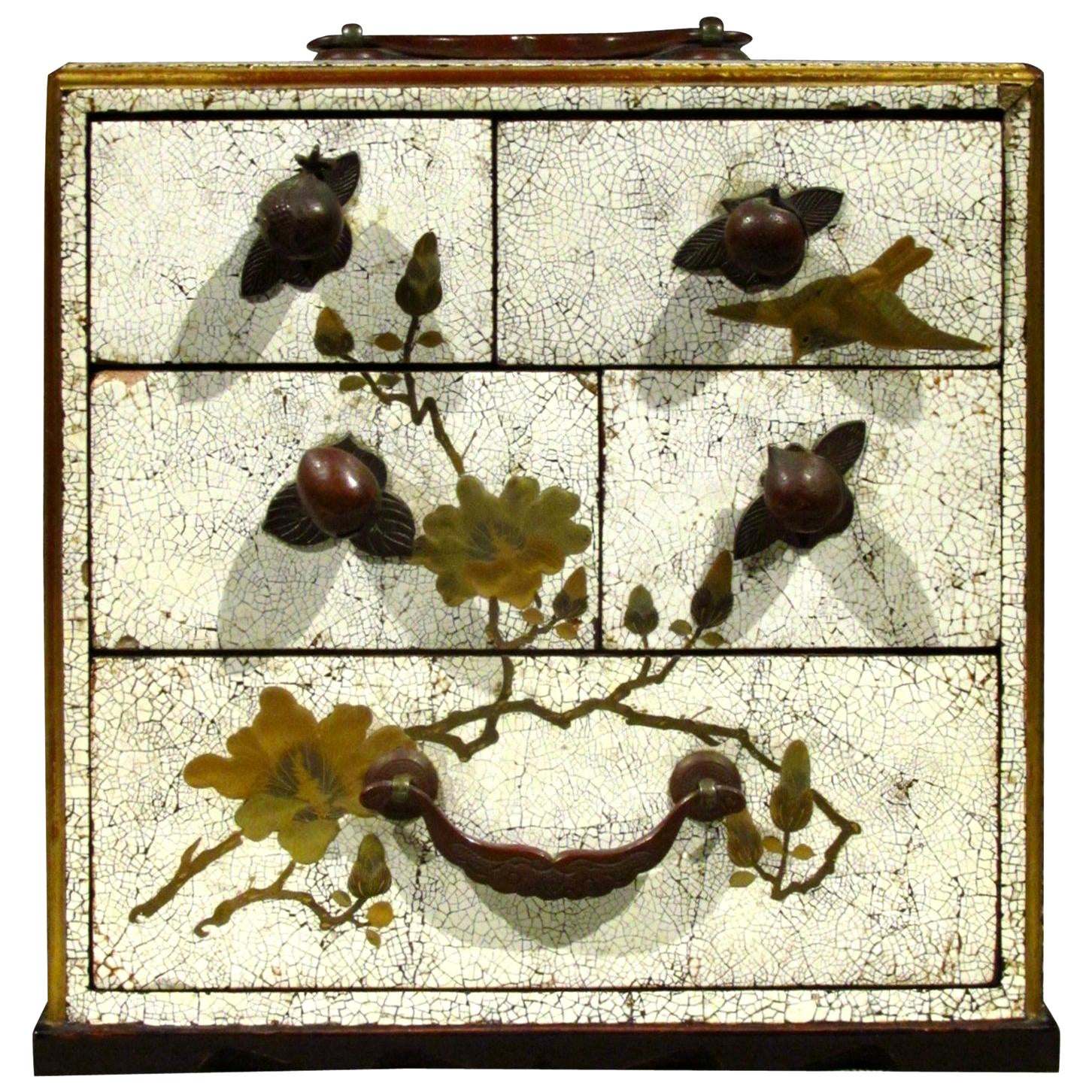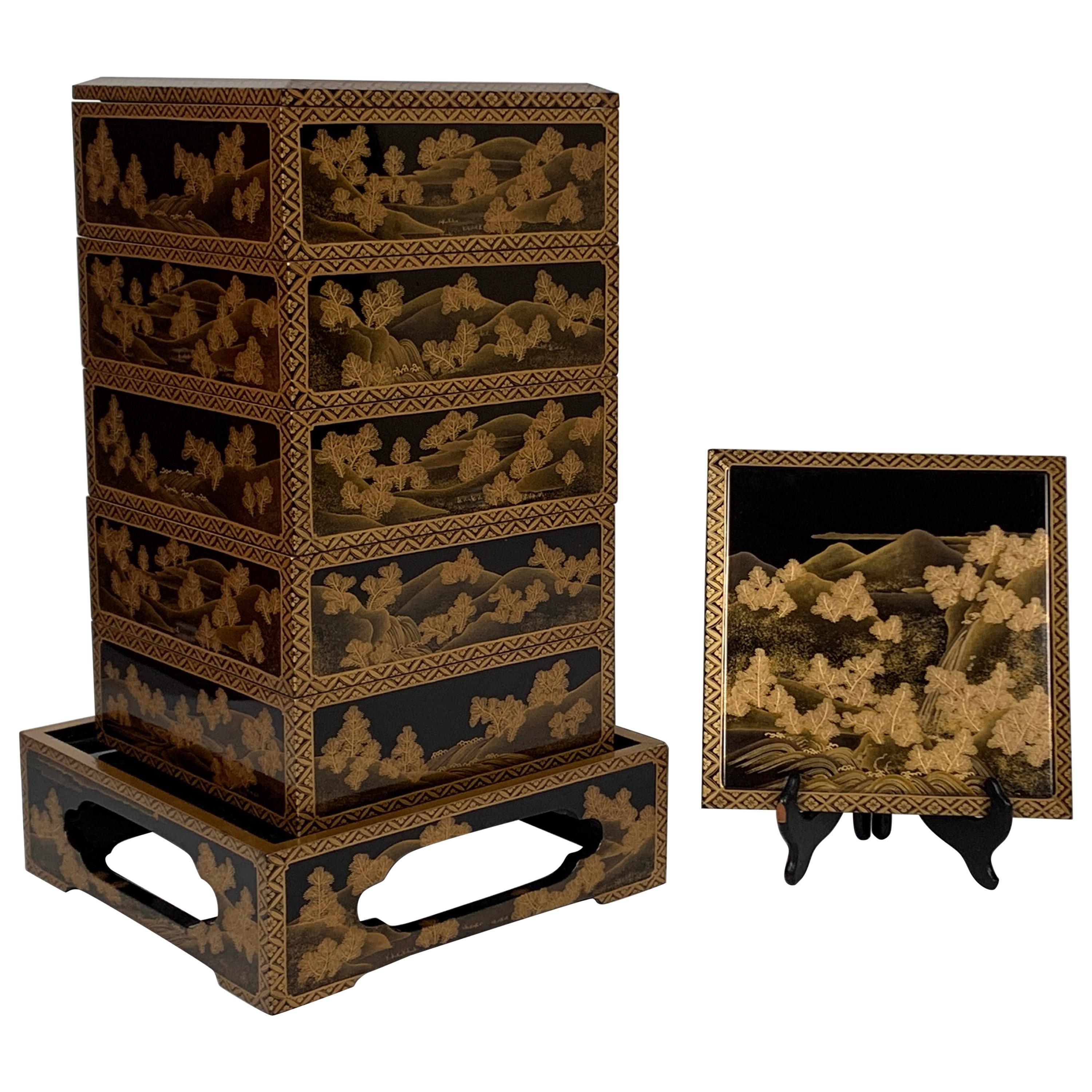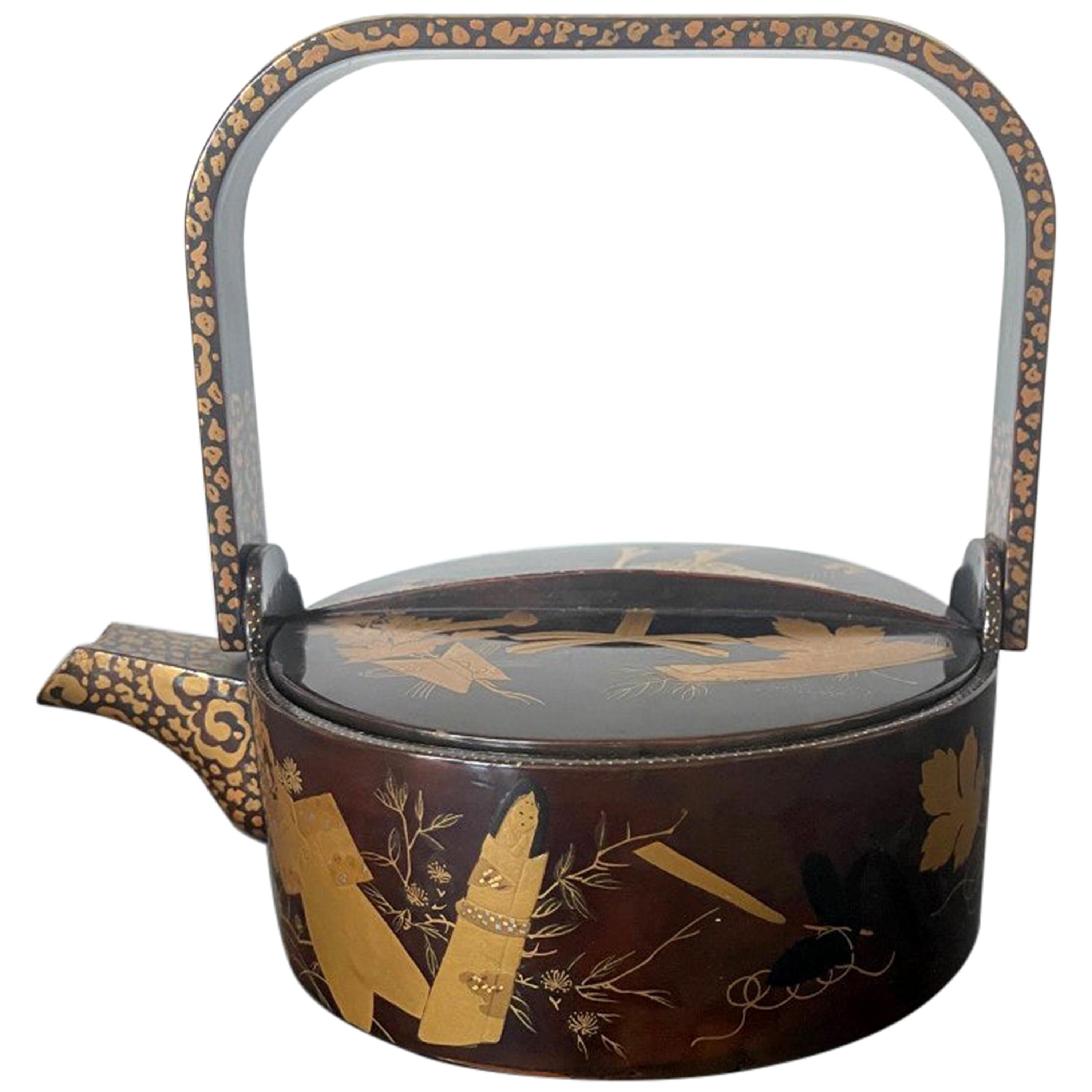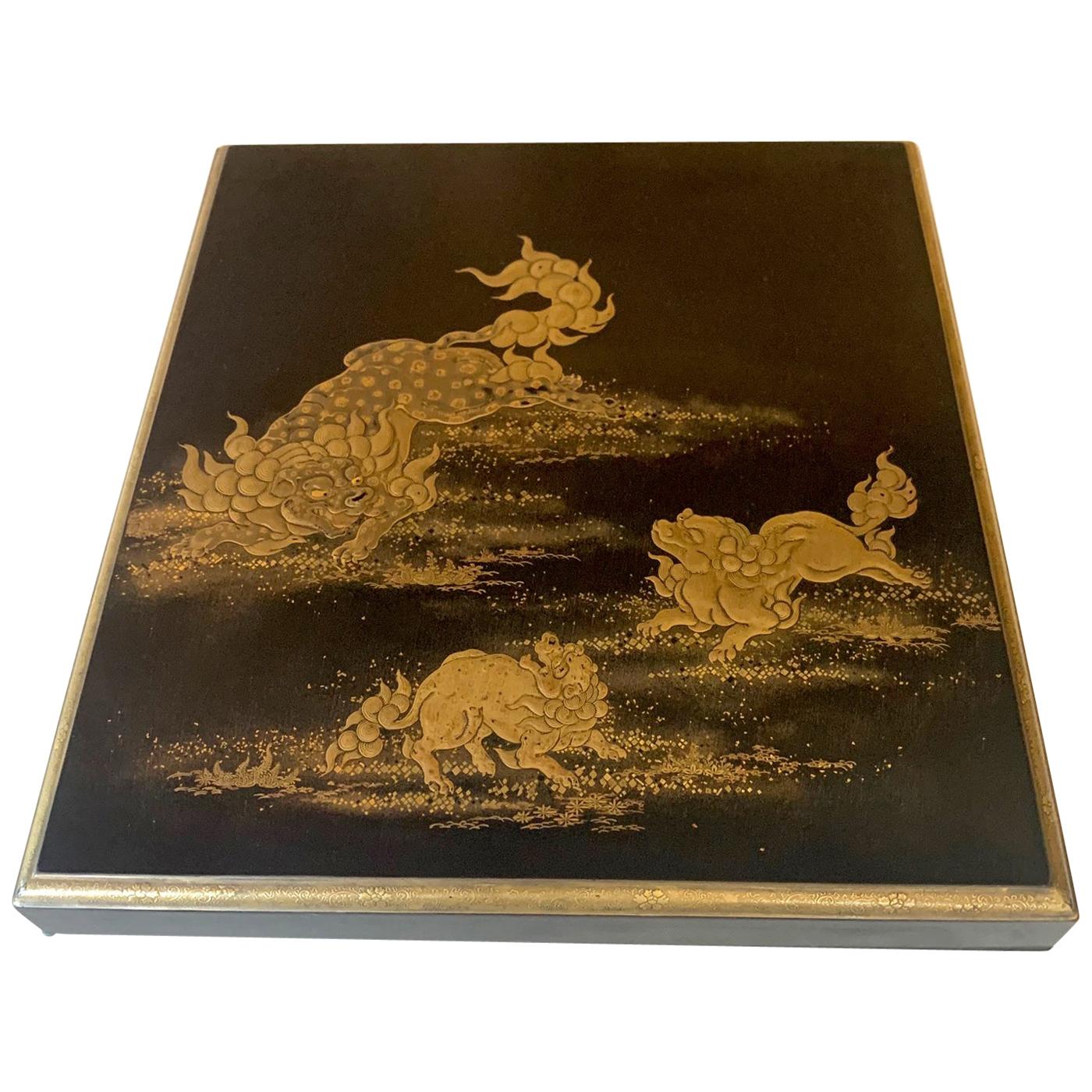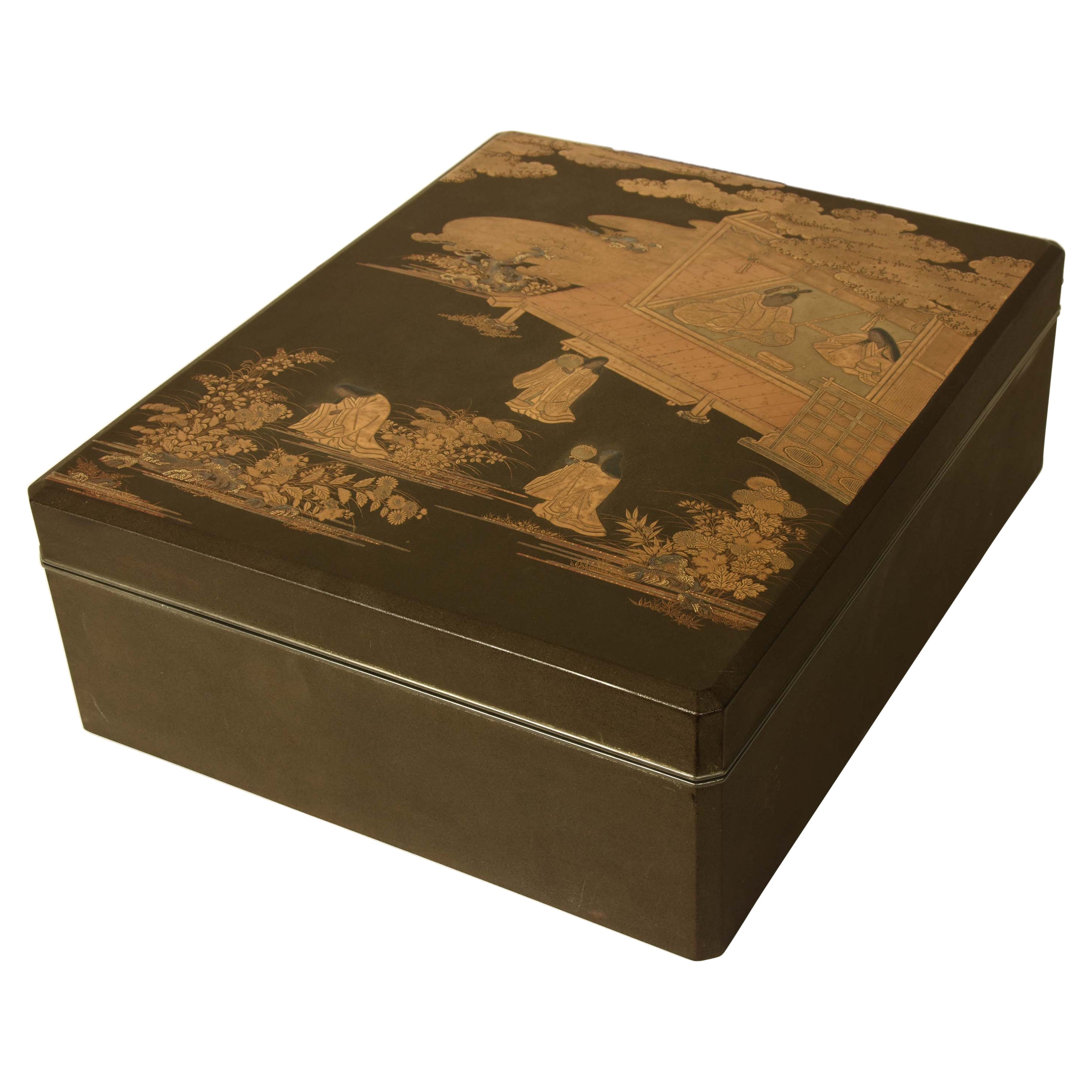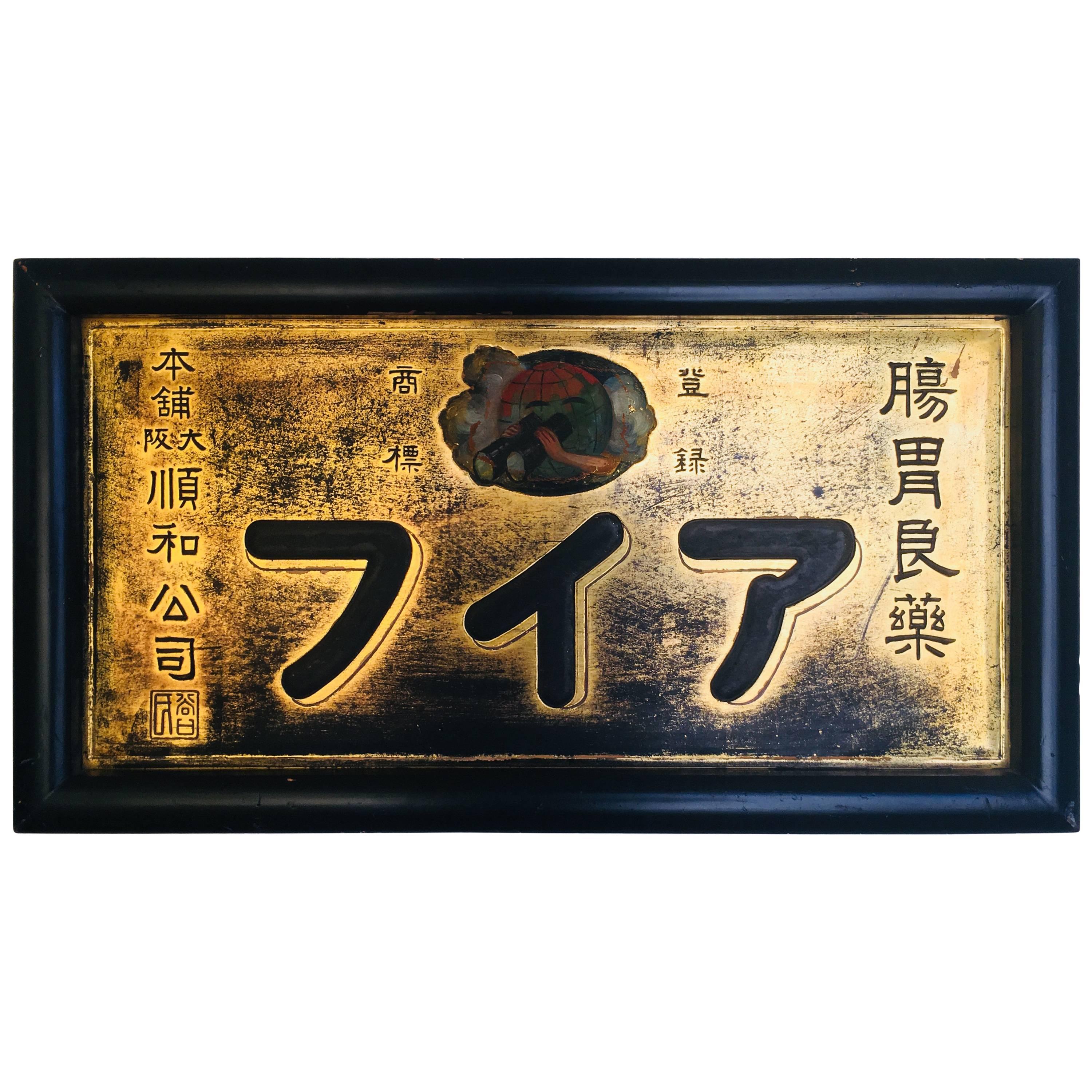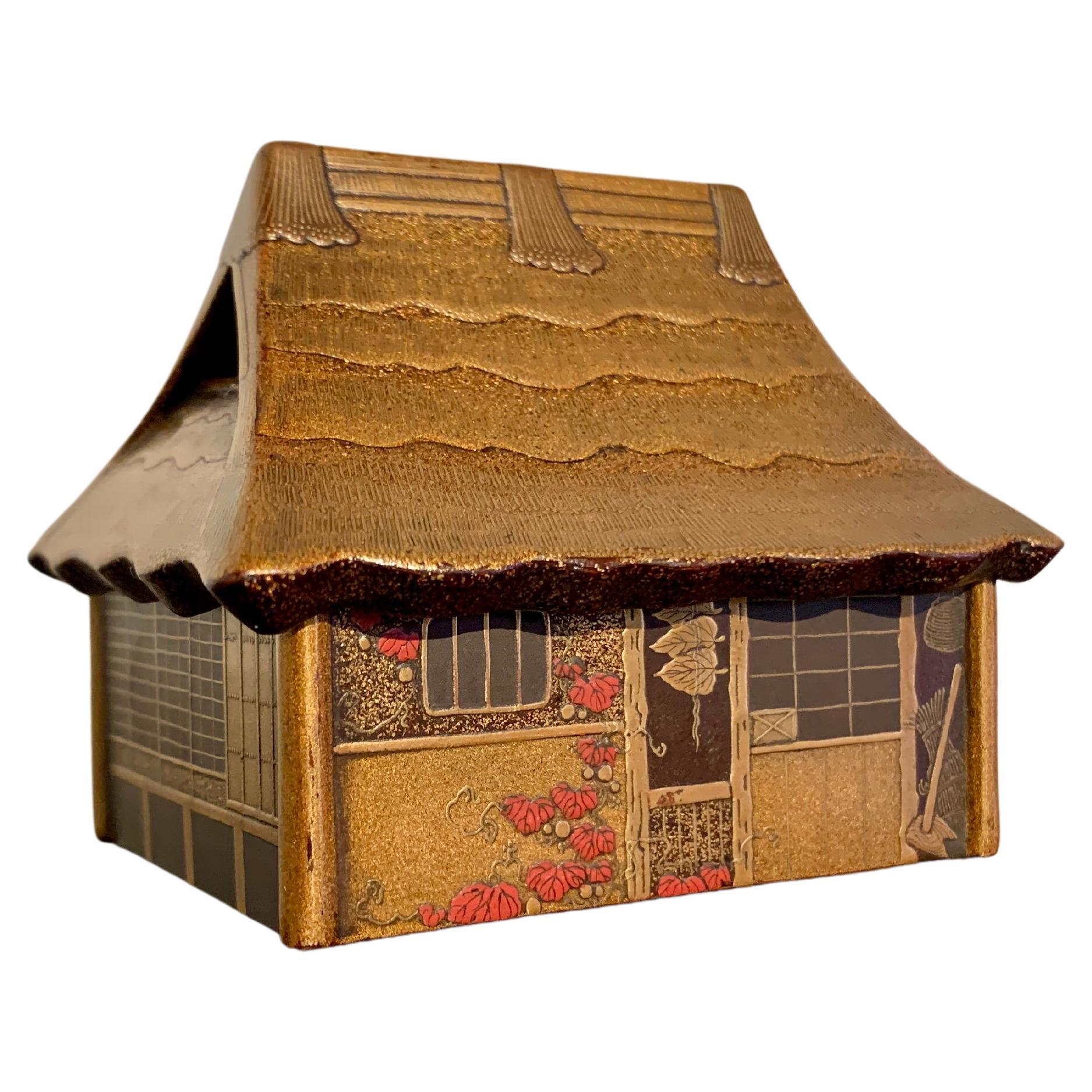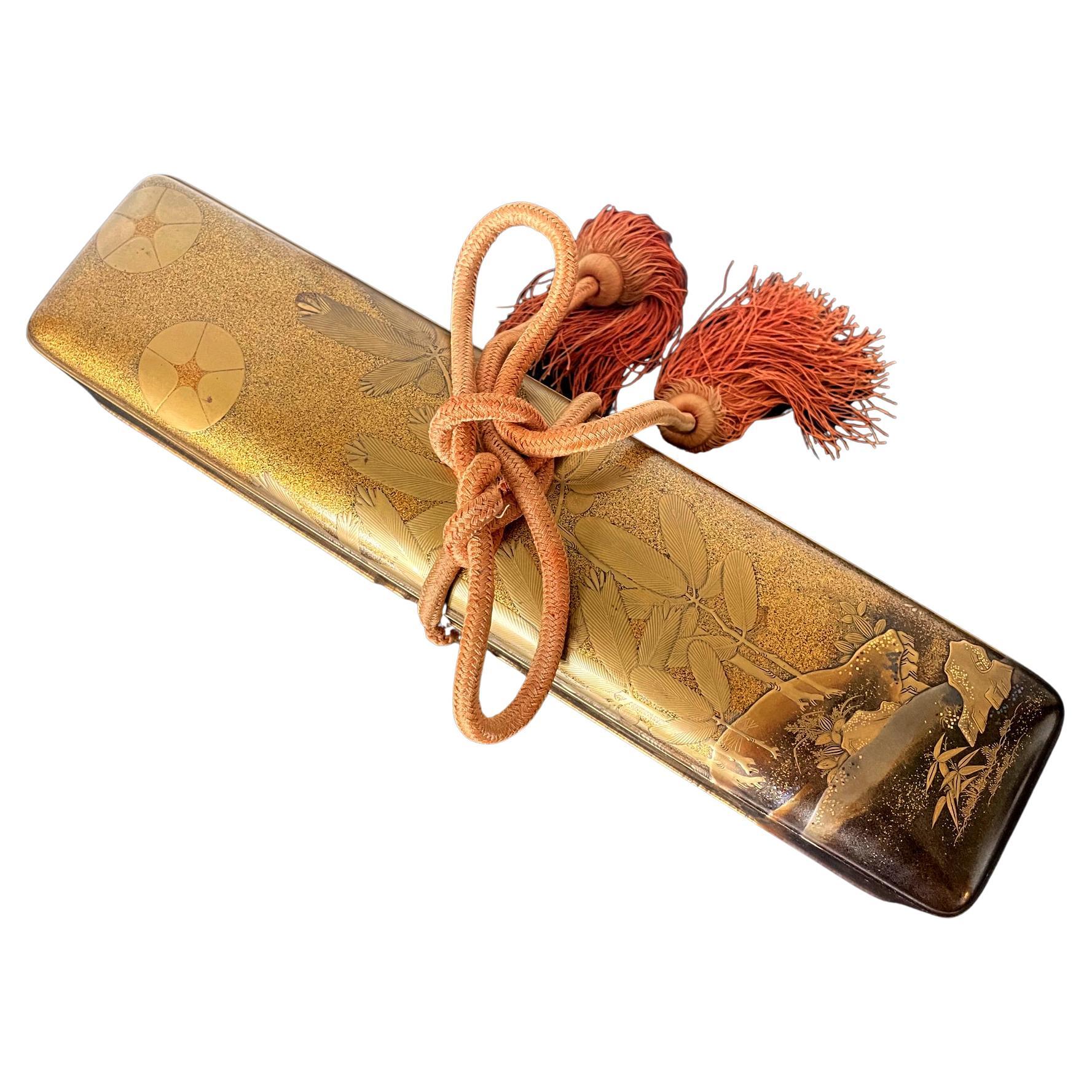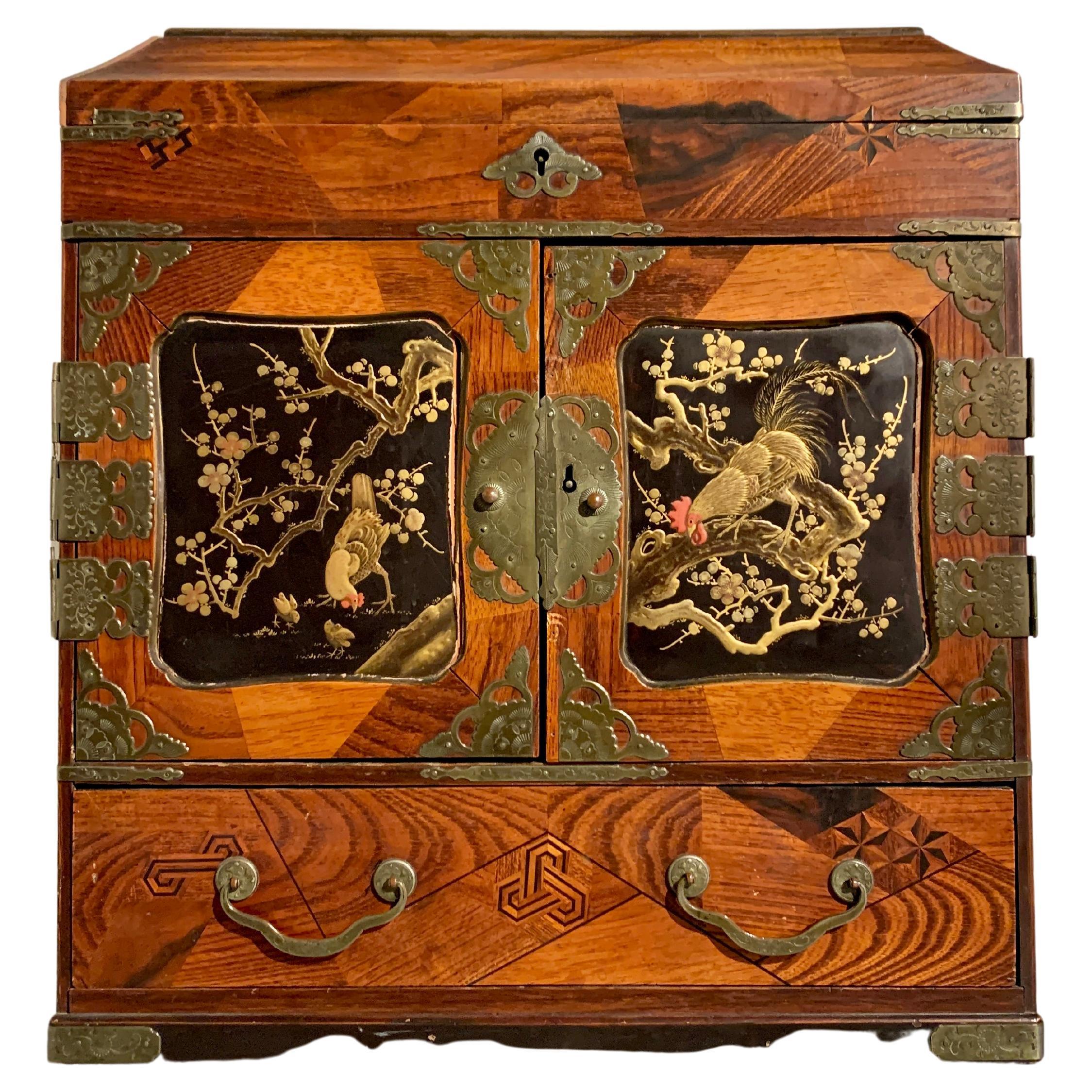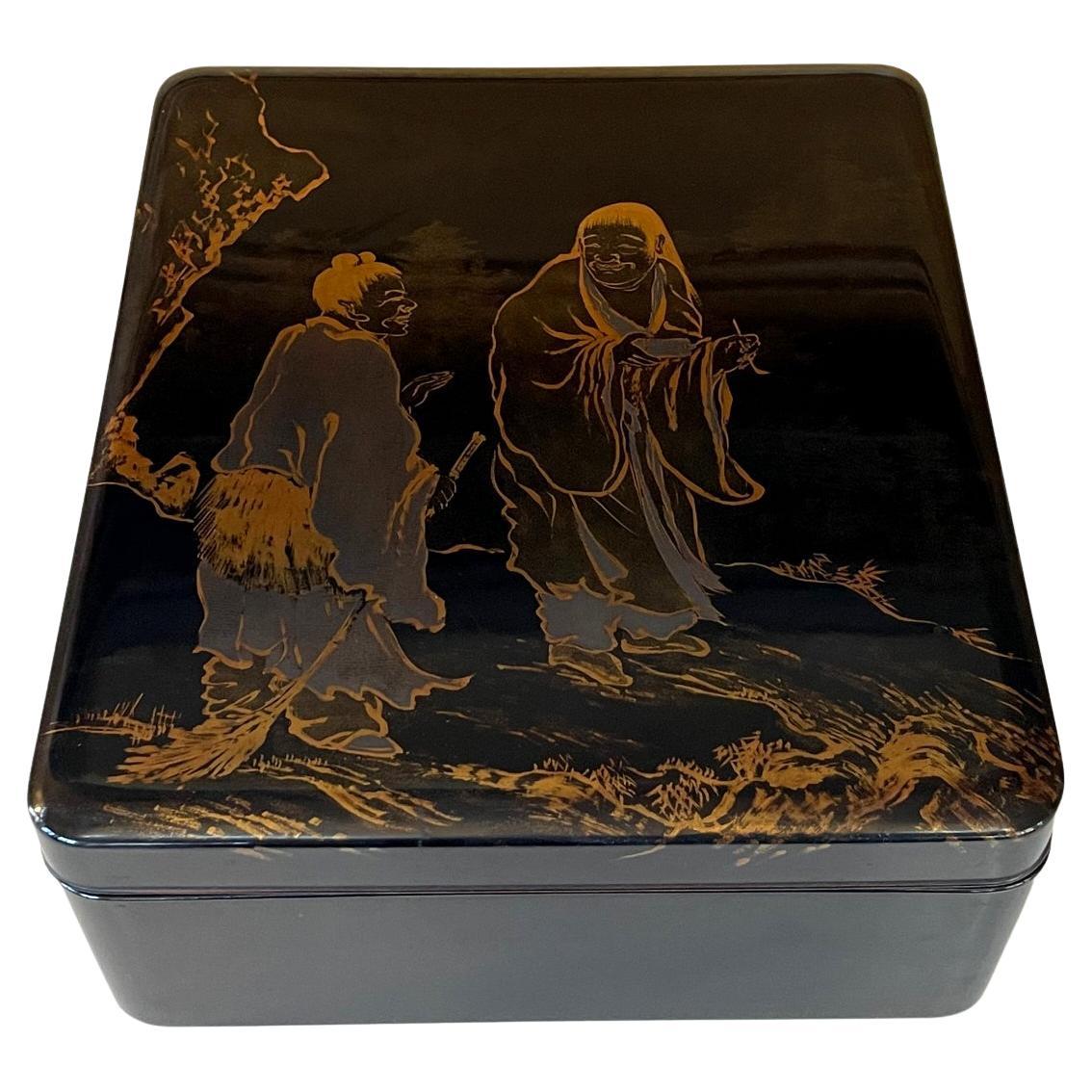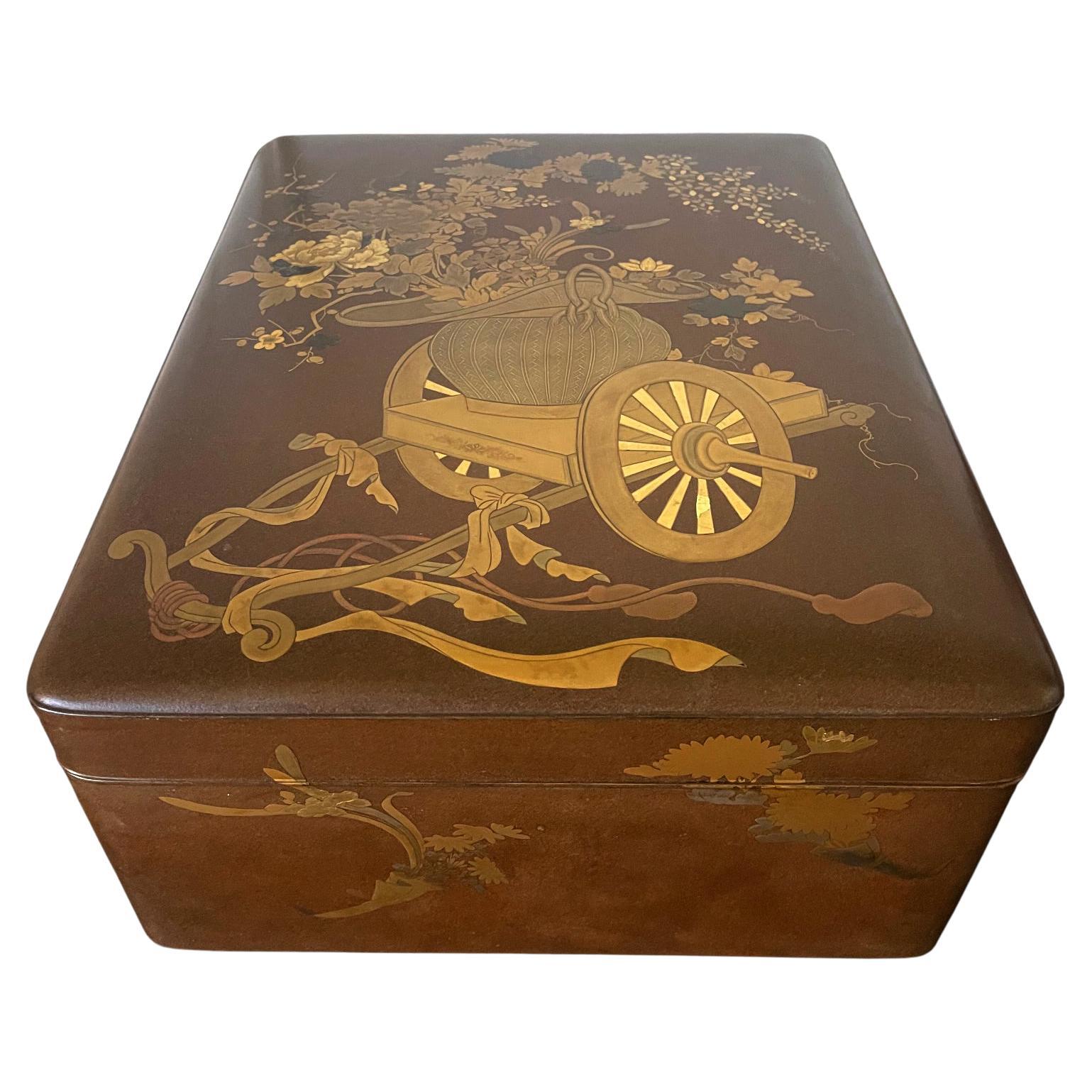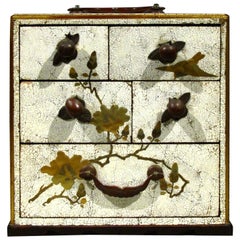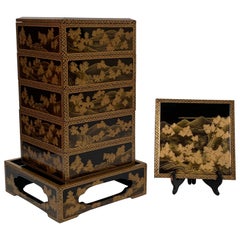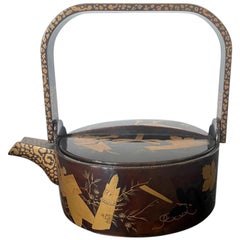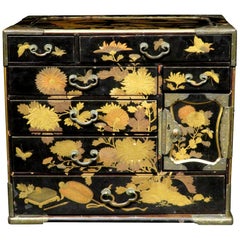
Japanese Black Lacquer & Maki-e Lacquer Tansu, Meiji Period, 1868-1912
View Similar Items
Want more images or videos?
Request additional images or videos from the seller
1 of 10
Japanese Black Lacquer & Maki-e Lacquer Tansu, Meiji Period, 1868-1912
About the Item
- Dimensions:Height: 14.75 in (37.47 cm)Width: 16.75 in (42.55 cm)Depth: 11 in (27.94 cm)
- Style:Meiji (Of the Period)
- Materials and Techniques:
- Place of Origin:
- Period:
- Date of Manufacture:circa 1890
- Condition:Wear consistent with age and use.
- Seller Location:Ottawa, CA
- Reference Number:1stDibs: LU2728312972911
About the Seller
5.0
Vetted Seller
These experienced sellers undergo a comprehensive evaluation by our team of in-house experts.
Established in 1989
1stDibs seller since 2017
More From This SellerView All
- Signed Japanese White Lacquer and Maki-E Lacquer Tansu, Meiji PeriodLocated in Ottawa, OntarioThe case decorated overall in crackle-glaze white lacquer and fitted with a patinated metal carrying handle over three tiers of small drawers. The first two tiers are comprised of a ...Category
Antique Late 19th Century Japanese Meiji Lacquer
MaterialsLacquer
- Very Fine Pair of Japanese Miniature Cloisonne Vases, Meiji Period (1868-1912)Located in Ottawa, OntarioBoth hexagonal panelled bodies exquisitely decorated by hand with multi-coloured enamels, illustrating directionally opposing vignettes of songbirds perched among flowering prunus ag...Category
Antique Early 1900s Japanese Meiji Vases
MaterialsCopper, Enamel
- Highly Decorative Antique Burmese Lacquered Betel Box / Kun-It, Circa 1900Located in Ottawa, OntarioThe vermillion lacquered cylindrical body decorated overall with repeating bands of curvilinear geometric motifs, the cover lifting to reveal both of its original trays intended to h...Category
Early 20th Century Burmese Lacquer
MaterialsLacquer, Bamboo
- A Very Fine Takamaki-e Lacquer Cheroot Case in the Manner of Shibata ZeshinBy Shibata ZeshinLocated in Ottawa, OntarioThe 'ishime' lacquered case consisting of two conforming molded sections with one sliding overtop the other, both sides decorated with hand painted gilt, silver & burnt dark russet (kasshoku) lacquers, depicting motifs in low relief of a rat with an acorn on one side and two acorns on the opposing. In Japanese culture rats are considered auspicious symbols of fertility & wealth, acorns symbolize prosperity & growth. Signed with characters and a mon on one edge. Takamaki-e is a lacquer technique in which metallic powders such as silver, gold, copper, pewter etc., are used in combination with lacquer & clay-dust to build up motifs in low relief. Please note that the color tones & hues of the lacquered motifs appear somewhat more vibrant in the images due to ambient lighting conditions. Regarding the opinion stating the superior quality of this fine example being likened to works associated with those by Shibata...Category
Antique 1870s Japanese Meiji Lacquer
MaterialsLacquer
- Very Fine & Large Japanese Bronze & Mixed Metal Vase, Meiji PeriodLocated in Ottawa, OntarioA large and very fine Meiji Period (1868-1912) patinated and mixed metal bronze vase of ovoid form, richly decorated with raised motifs of flying cranes accented with silver-overlay,...Category
Early 20th Century Japanese Meiji Metalwork
MaterialsSilver, Bronze
- Japanese Cinnabar Scholars Cabinet, Early Taisho Period (1912-1926)Located in Ottawa, OntarioThe top & sides decorated with cartouche shaped panels depicting fauna & flora, the front showing a pair of panelled doors decorated with flying cranes & clouds, the obverse decorate...Category
Antique Early 1900s Japanese Taisho Scholar's Objects
MaterialsBrass
You May Also Like
- Japanese Maki-e Lacquer Stacking Box, Jubako, Meiji Period, JapanLocated in Austin, TXA fine and impressive Japanese gold maki-e decorated black lacquer five-tier jubako with presentation tray, two lids, and the original tomobako storage box, Meiji period, late 19th c...Category
Antique Late 19th Century Japanese Meiji Lacquer
MaterialsLacquer
- Japanese Lacquer Maki-e Sake Ewer Meiji PeriodLocated in Atlanta, GAA Japanese lacquered wood sake ewer with maki-e design, circa late 19th century, Meiji period. The nicely decorated lacquerware is of a Classic sake ewer for...Category
Antique 1890s Japanese Japonisme Lacquer
MaterialsLacquer
- Japanese Meiji Period Antique Lacquer Box with Gold Maki-e DecorationLocated in New York, NYA fine antique Japanese Meji Period lacquer box decorated with a fan and a stylized star shaped window in the maki-e technique. The fan at the top right corner, fully opened depictin...Category
Antique 19th Century Japanese Meiji Lacquer
MaterialsLacquer
- Japanese Lacquer Box with Fine Maki-e Decoration Meiji PeriodLocated in Atlanta, GAA lacquered wood box with lid from Japan circa 19th century Meiji Period. The finely decorated box was used to store paper slips and small documents on the desk. It is overall finished with black lacquer (kuro) with sparse Mura-Nashiji effect outside and on the top surface of the lid, there are three Komainu, (sometimes known as Shishi or Japanese lions) frolicking and forming a circle in lively motion. Komainu are auspicious animals in Japanese cultures in both Shinto and Buddhism tradition. Originally from China, these animals symbolizes guardians to ward off evil spirits. Hiramaki-e was used in combination with carving and combing to render the lions with various surface textures. A gilt border with an slight angle was given to the lid and even the thin band is decorated with miniature floral scrolls. The interior of the box was finished in a dense nashiji. Underneath the lid, a cluster of peonies open lavishly by two gentle mounts. Takamaki-e (high relief) in both gold and silver were...Category
Antique Late 19th Century Japanese Japonisme Lacquer
MaterialsWood, Lacquer
- Japanese Black Lacquer Document Box with Gold Maki e Design, Meiji PeriodLocated in Prahran, VictoriaAn antique black lacquer document box with an exquisitely detailed, finely wrought design from The Tale of the Genji depicted in gold maki e across the lid. Internally, the box is de...Category
Early 20th Century Japanese Lacquer
MaterialsWood, Lacquer
$5,200 Sale Price20% Off - Kanban, Japanese Shop Sign, Meiji Period, 1868-1912Located in Camden, METhis 19th century Japanese Pharmacy sign advertises a popular stomach medicine, Aifu from the Juwa Co. in Osaka. The hand-painted registered trademark of the world looking through bi...Category
Antique 19th Century Japanese Meiji Lacquer
MaterialsLacquer
